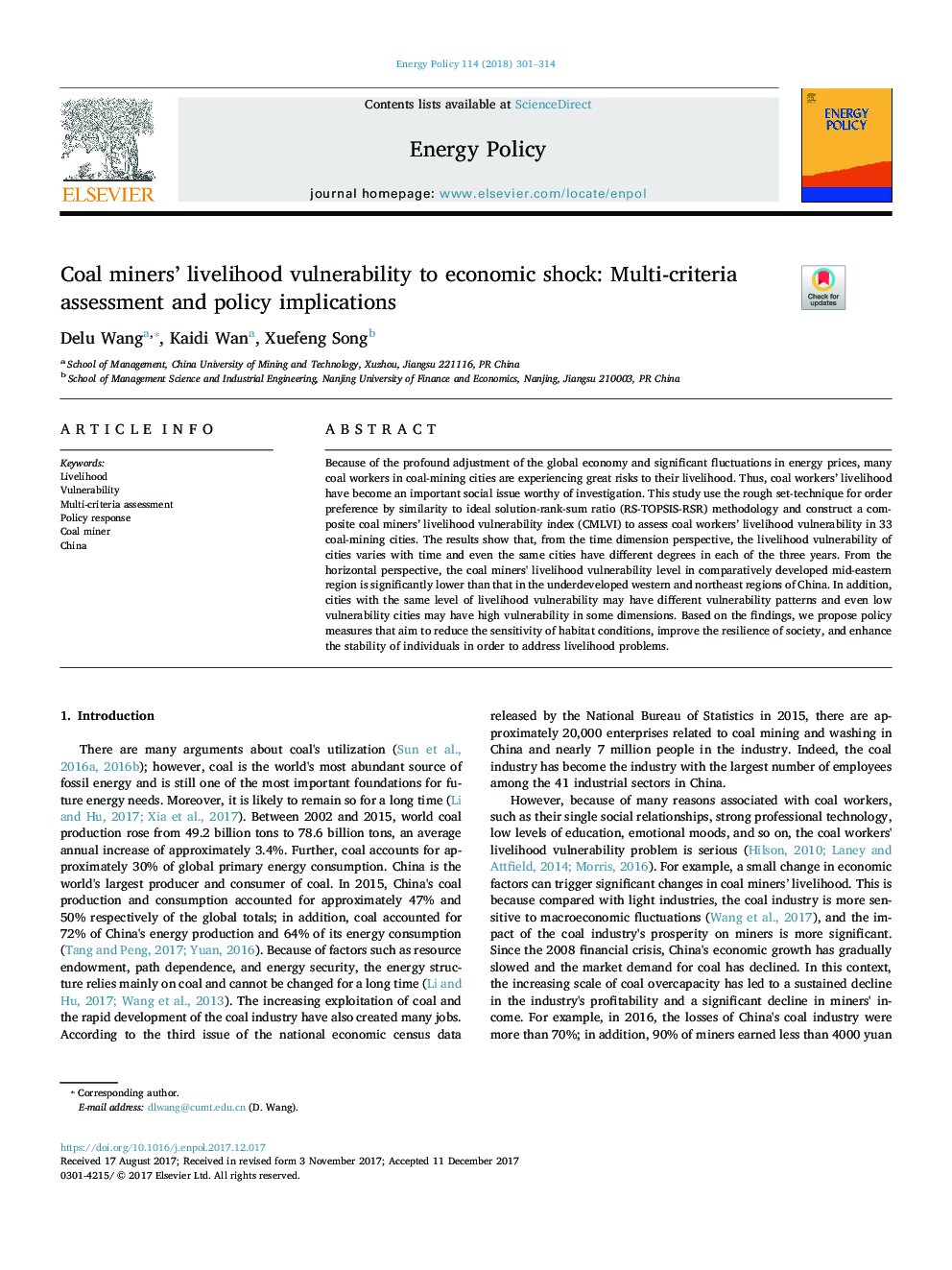| Article ID | Journal | Published Year | Pages | File Type |
|---|---|---|---|---|
| 7397644 | Energy Policy | 2018 | 14 Pages |
Abstract
Because of the profound adjustment of the global economy and significant fluctuations in energy prices, many coal workers in coal-mining cities are experiencing great risks to their livelihood. Thus, coal workers' livelihood have become an important social issue worthy of investigation. This study use the rough set-technique for order preference by similarity to ideal solution-rank-sum ratio (RS-TOPSIS-RSR) methodology and construct a composite coal miners' livelihood vulnerability index (CMLVI) to assess coal workers' livelihood vulnerability in 33 coal-mining cities. The results show that, from the time dimension perspective, the livelihood vulnerability of cities varies with time and even the same cities have different degrees in each of the three years. From the horizontal perspective, the coal miners' livelihood vulnerability level in comparatively developed mid-eastern region is significantly lower than that in the underdeveloped western and northeast regions of China. In addition, cities with the same level of livelihood vulnerability may have different vulnerability patterns and even low vulnerability cities may have high vulnerability in some dimensions. Based on the findings, we propose policy measures that aim to reduce the sensitivity of habitat conditions, improve the resilience of society, and enhance the stability of individuals in order to address livelihood problems.
Related Topics
Physical Sciences and Engineering
Energy
Energy Engineering and Power Technology
Authors
Delu Wang, Kaidi Wan, Xuefeng Song,
